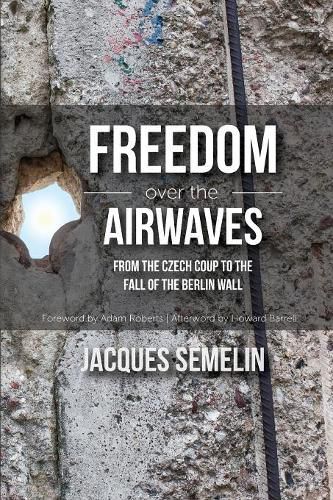Readings Newsletter
Become a Readings Member to make your shopping experience even easier.
Sign in or sign up for free!
You’re not far away from qualifying for FREE standard shipping within Australia
You’ve qualified for FREE standard shipping within Australia
The cart is loading…






This title is printed to order. This book may have been self-published. If so, we cannot guarantee the quality of the content. In the main most books will have gone through the editing process however some may not. We therefore suggest that you be aware of this before ordering this book. If in doubt check either the author or publisher’s details as we are unable to accept any returns unless they are faulty. Please contact us if you have any questions.
This book on the relationship between communications and nonviolent resistance captures a new understanding of the events that led ultimately to the fall of the authoritarian system in communist Central and Eastern Europe in 1989. In particular, it analyzes history-making acts of resistance and the movements that propelled them in Budapest in 1956, Prague in 1968, Gdansk in 1980 and East Berlin in 1989, in their own historical continuum.
As we evaluate each crisis in relation to the others, we find that beyond cultural and national differences among the countries of the Soviet sphere, the knowledge of how to develop resistance was built up in a little over three generations – a know-how that tied together means of opposition with means of media and communication. Non-provocative, nonviolent methods of action came to supersede uncontrolled forms of violence, and even the mere temptation of armed struggle. From 1968 to 1989, the empowerment of civil resistance movements in Central Europe was witnessed–a phenomenon that strengthened the re-emergence and rebuilding of civil society.
In a new Afterword penned for the English translation, Howard Barrell extends this evaluation to encompass the role of social media and digital technology in more recent and potential resistance struggles. This preeminent study offers a rare addition to understanding the transformation of half a continent.
$9.00 standard shipping within Australia
FREE standard shipping within Australia for orders over $100.00
Express & International shipping calculated at checkout
This title is printed to order. This book may have been self-published. If so, we cannot guarantee the quality of the content. In the main most books will have gone through the editing process however some may not. We therefore suggest that you be aware of this before ordering this book. If in doubt check either the author or publisher’s details as we are unable to accept any returns unless they are faulty. Please contact us if you have any questions.
This book on the relationship between communications and nonviolent resistance captures a new understanding of the events that led ultimately to the fall of the authoritarian system in communist Central and Eastern Europe in 1989. In particular, it analyzes history-making acts of resistance and the movements that propelled them in Budapest in 1956, Prague in 1968, Gdansk in 1980 and East Berlin in 1989, in their own historical continuum.
As we evaluate each crisis in relation to the others, we find that beyond cultural and national differences among the countries of the Soviet sphere, the knowledge of how to develop resistance was built up in a little over three generations – a know-how that tied together means of opposition with means of media and communication. Non-provocative, nonviolent methods of action came to supersede uncontrolled forms of violence, and even the mere temptation of armed struggle. From 1968 to 1989, the empowerment of civil resistance movements in Central Europe was witnessed–a phenomenon that strengthened the re-emergence and rebuilding of civil society.
In a new Afterword penned for the English translation, Howard Barrell extends this evaluation to encompass the role of social media and digital technology in more recent and potential resistance struggles. This preeminent study offers a rare addition to understanding the transformation of half a continent.